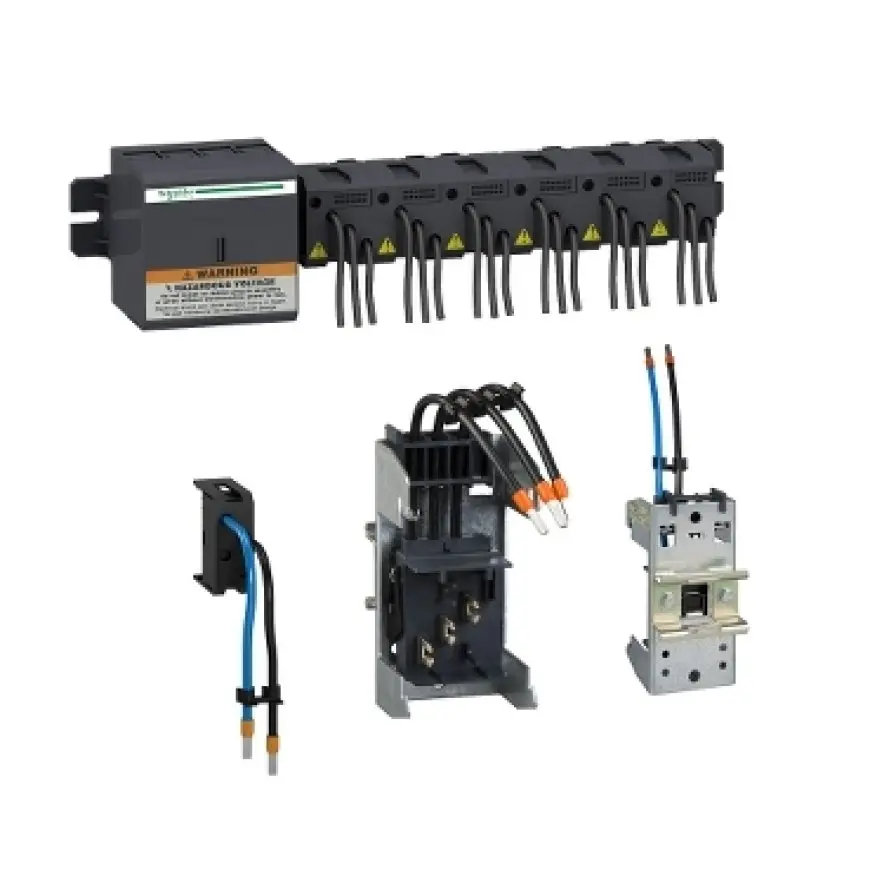Busbars: The Key to Efficient Power Distribution

As industries and infrastructure continue to expand, the demand for stable, scalable, and efficient power distribution systems is growing rapidly. One of the most vital, yet often overlooked, components in electrical distribution networks is the busbar. Known for its ability to conduct and distribute electricity within switchboards, distribution panels, and substations, the busbar plays a crucial role in ensuring operational reliability and safety in a wide range of electrical systems.
This blog explores what a busbar is, why it is essential for power distribution, the types available, and how it contributes to energy efficiency and system optimisation.
What is a Busbar?
A busbar is a metallic strip or bar, typically made of copper, aluminium, or brass, designed to conduct electricity within an electrical distribution system. It serves as a central point for collecting power from incoming feeders and distributing it to outgoing feeders, ensuring seamless current flow across the electrical network.
Busbars are commonly found in:
-
Switchboards and panel boards
-
Distribution boards
-
Data centres
-
Industrial power installations
Their modular design allows them to handle high volumes of electricity safely and efficiently, which makes them especially valuable in both commercial and industrial settings.
Why Busbars Are Critical for Power Distribution?
As modern power systems grow more complex and energy demands increase, ensuring efficient, safe, and scalable power distribution has become essential. This is where busbars come in, offering a reliable and streamlined solution across industries.
-
Efficient Energy Flow
One of the most important advantages of using a busbar system is its ability to manage high-current loads with minimal energy loss. The flat and wide surface of a busbar provides a lower impedance path for electricity, which results in better conductivity and lower heat generation. This efficiency is especially critical in high-power applications such as factories, hospitals, or data centres.
-
Compact and Space-Saving
Unlike traditional wiring systems, which require multiple cables and complex routing, busbars offer a compact solution for distributing power. Their design reduces clutter and saves valuable space within electrical panels or enclosures. This makes them an excellent option in environments where spatial efficiency is key, such as marine vessels, modular data centres, or large-scale manufacturing plants.
-
Ease of Installation and Maintenance
Busbars simplify the process of installation and future maintenance. Since they are prefabricated and often modular, they reduce installation time and labour costs. Additionally, their straightforward layout makes it easier to identify connection points, troubleshoot faults, and replace components without dismantling entire sections of the electrical system.
-
Improved Safety and Reliability
Safety is a top priority in any electrical setup. Busbars are enclosed in insulated and fire-resistant materials, reducing the risk of short circuits, arc faults, and accidental contact. Their rigid structure also prevents physical sagging or loosening over time, which contributes to long-term system stability and reliability.
Types of Busbars
There are various types of busbars designed to meet different power distribution needs:
-
Single Busbar System
This is the simplest configuration, where all equipment is connected to a single busbar. While cost-effective and easy to maintain, it lacks redundancy, meaning any fault could shut down the entire system.
-
Double Busbar System
This system includes two busbars and offers greater flexibility. It allows switching between busbars for load balancing or maintenance without interrupting the power supply.
-
Isolated Phase Busbars
These are used in power plants where each phase of the system is separated to prevent short circuits and reduce electromagnetic interference.
-
Segregated and Non-Segregated Bus Ducts
These are enclosed busbar systems used to protect against dust, moisture, and other environmental factors, especially in harsh or outdoor settings.
Busbars and Energy Efficiency
The importance of energy efficiency in power distribution cannot be overstated. Busbars help achieve this by:
-
Reducing transmission losses due to lower impedance
-
Minimising resistance heating
-
Enhancing voltage regulation and load distribution
Moreover, busbars allow for better integration with smart monitoring systems. This means real-time data on power usage, fault detection, and load performance can be captured and analysed to improve system efficiency further.
Applications Across Industries
Busbars are not limited to one industry; their application is broad and essential in:
-
Industrial Automation Systems: To power and control heavy-duty machines and robots
-
Commercial Buildings: For lighting, HVAC, and energy management systems
-
Renewable Energy Setups: Such as solar farms and wind turbines, where high current flows need controlled distribution
-
Railways and Transportation: For powering electrical signalling and communication systems
-
Data Centres: Where uninterrupted power distribution is critical for server uptime
Future of Busbars in Electrical Design
With growing energy demands and the rise of decentralised power systems, the use of busbars is evolving. Modern systems now incorporate features such as:
-
Plug-and-play modularity
-
Integration with IoT and smart metering
-
Enhanced thermal management
-
Compatibility with renewable energy sources and energy storage systems
The continued innovation in busbar technology is not only making power distribution more efficient but also more intelligent and adaptable.
Rethinking Power Distribution with Busbars
The busbar may not be the most visible component in an electrical system, but it is undeniably one of the most vital. From improving energy efficiency and system reliability to simplifying installation and enabling smarter power management, busbars are key to building robust, modern electrical infrastructures.
As businesses and energy systems grow more complex, integrating busbars into your power distribution design is not just a technical upgrade; it's a strategic move toward long-term performance, safety, and sustainability.















